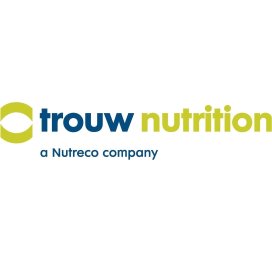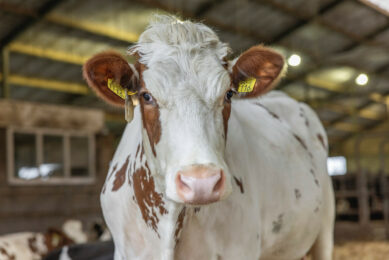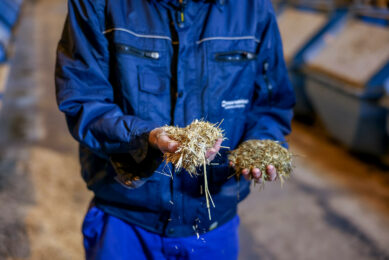Feed efficiency to reduce cost and lower methane
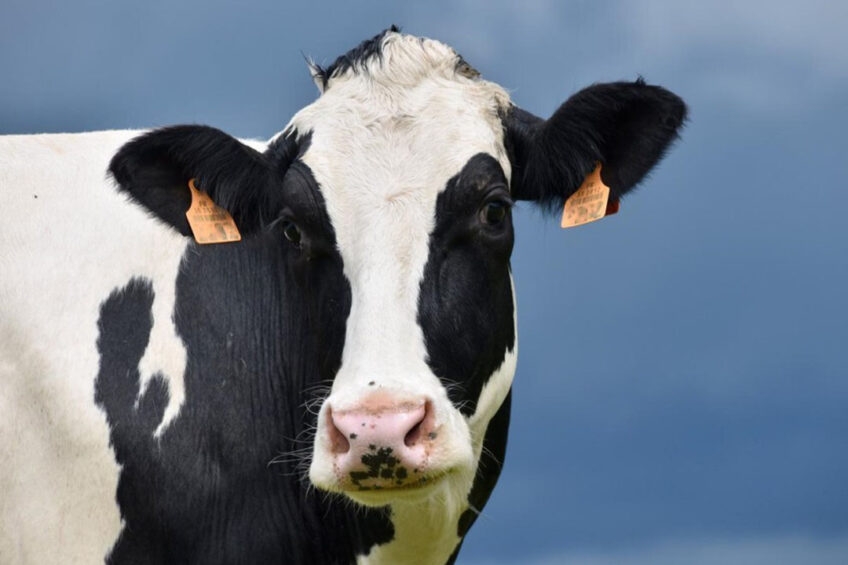
Feed costs represent approximately 60–70% of the variable costs involved in milk production from dairy cows. Increasing feed efficiency should therefore reduce the costs per litre of milk produced. Additionally, an improvement in feed efficiency will typically reduce the environmental footprint of the farm by reducing the amount of greenhouse gases per litre of milk produced.
How can feed efficiency be defined?
Feed efficiency in dairy cows can be defined as the amount of milk produced per unit of dry matter consumed. This can be calculated in several ways. A commonly used way is to divide the kilogrammes of Energy Corrected Milk (ECM) by kilogrammes of Dry Matter Intake (DMI). When data from different studies is compared, it is important to understand which formula for calculating ECM has been used. In Europe, for example, it is quite common to correct to 4.0% fat, whereas in the US, 3.5% is more commonly used.
How can feed efficiency be influenced?
Feed efficiency in lactating cows can vary from 1.3 to 2.0. As a result, the income over feed costs and the environmental footprint of the farm can vary enormously between dairy farms. Several factors have an impact on the feed efficiency of dairy cows. Of those, digestibility of the feed is one of the most important. In ruminants, a well-functioning rumen is key to ensure maximum digestibility of feed.
Improving digestibility and trace minerals
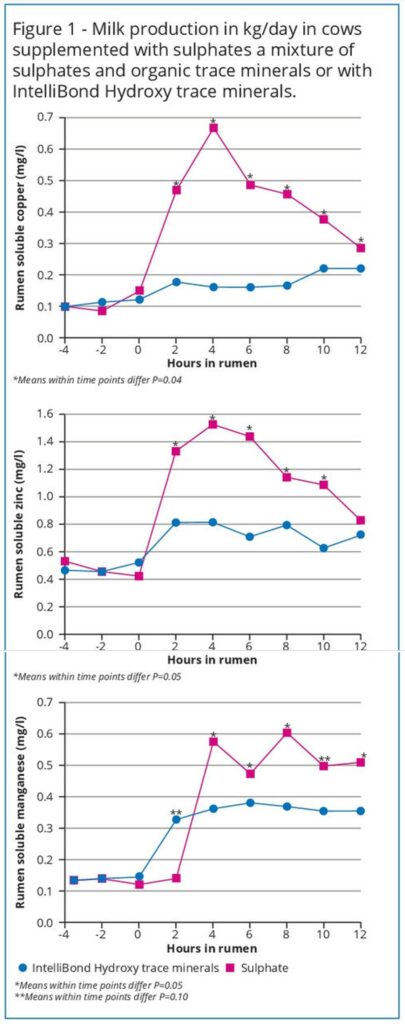 Sulphate trace minerals are commonly used in footbaths because they readily release their trace metal ions, which are known to be antimicrobial. This is highly desirable when they are used to deal with hoof-related infections. However, within the rumen, the antimicrobial effect of sulphates is highly undesirable. Unfortunately, the sulphate salts that are commonly used in dairy feed are highly soluble in the rumen, resulting in high peak concentrations of free metal ions, which has a detrimental impact on rumen microbes.
Sulphate trace minerals are commonly used in footbaths because they readily release their trace metal ions, which are known to be antimicrobial. This is highly desirable when they are used to deal with hoof-related infections. However, within the rumen, the antimicrobial effect of sulphates is highly undesirable. Unfortunately, the sulphate salts that are commonly used in dairy feed are highly soluble in the rumen, resulting in high peak concentrations of free metal ions, which has a detrimental impact on rumen microbes.In contrast, the hydroxy forms of trace minerals, such as Selko IntelliBond, are largely insoluble at a pH of 4 or higher. The rumen pH of dairy cattle is typically between 6 and 6.5, so hydroxy trace mineral crystals are essentially insoluble within the rumen. In the abomasum, where the pH is usually below 3, the crystals dissociate layer by layer, resulting in a gradual and sustained release of trace metal ions into the duodenum. As a result, the bioavailability of hydroxy trace minerals is high, but peak concentrations in the rumen and other parts of the GI tract always remain low (Figure 1).
The effect of sulphate and hydroxy trace mineral supplementation on neutral detergent fibre (NDF) digestibility was studied in dairy cows on a low forage diet and a high forage diet (Figure 2).
Completely replacing sulphate trace minerals with hydroxy trace minerals resulted in a significant improvement of fibre digestibility. This finding was subsequently confirmed in multiple peer-reviewed studies. A meta-analysis of 12 of these studies showed an average improvement of NDF digestibility of 1.7%. Published research in dairy cows has shown that each one-point difference in NDF digestibility can represent an extra 0.25-0.3 kg of daily ECM production.
 Improvement of rumen function
Improvement of rumen function
Optimal rumen fermentation results in an increase in volatile fatty acids (VFA), which are an important source of energy for the dairy cow. In a trial by Guimares et al., feeding hydroxy trace minerals to completely replace sulphates resulted in an increase of VFA production in the rumen of 21%, resulting in an increase in propionate production of 15%.
Improvement of fibre digestibility
In a trial published by Cornell University, milk production was increased in early lactation cows fed hydroxy trace minerals compared to cows fed sulphate trace minerals (Figure 3). The hydroxy trace mineral group reached peak production sooner and produced 3.5 more litres of milk at the peak of lactation. The dynamics of lactation persistence in dairy cows indicate that 1 kg of extra milk at peak lactation is equal to 200 kg of extra milk per lactation.
More recent studies have also resulted in a significant increase in milk and fat production in cows fed hydroxy trace minerals.
Increasing profitability
Feed efficiency is an important driver of dairy farm profitability. Feeding hydroxy trace minerals compared with feeding sulphate trace minerals can significantly improve fibre digestibility within the ration, enabling cows to produce more milk from the same amount of feed. This benefit gained from feeding hydroxy trace minerals is achieved via the total replacement of sulphate trace minerals within the ration.
The transition to lactation is a critical period in the production cycle of a dairy cow. Improving feed efficiency is one of the many ways to improve this transition. For more information about transition management, please visit healthylife.trouwnutriton.com.
Selko is the Feed Additive brand of Nutreco. Research references are available upon request.
Join 13,000+ subscribers
Subscribe to our newsletter to stay updated about all the need-to-know content in the dairy sector, two times a week.


